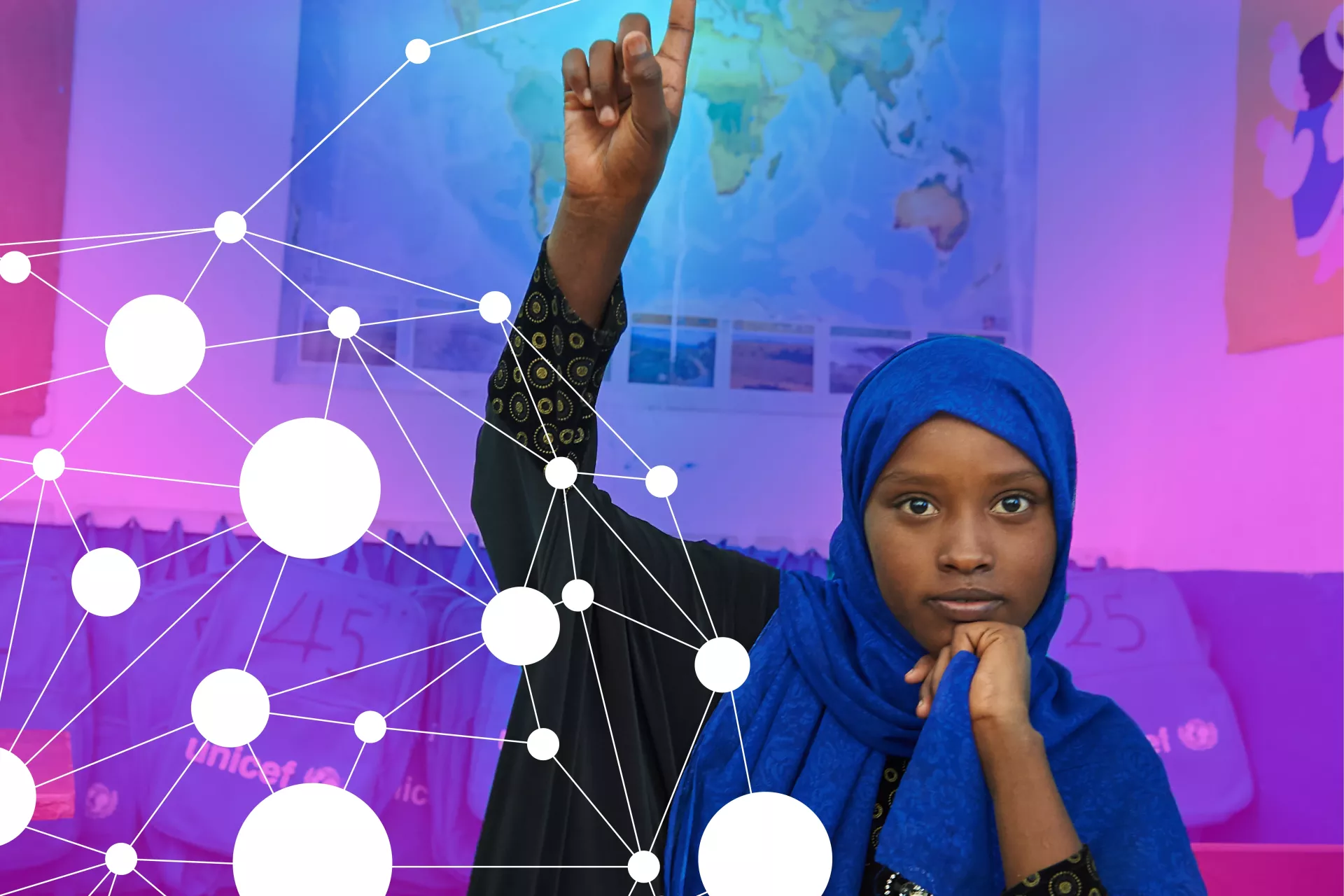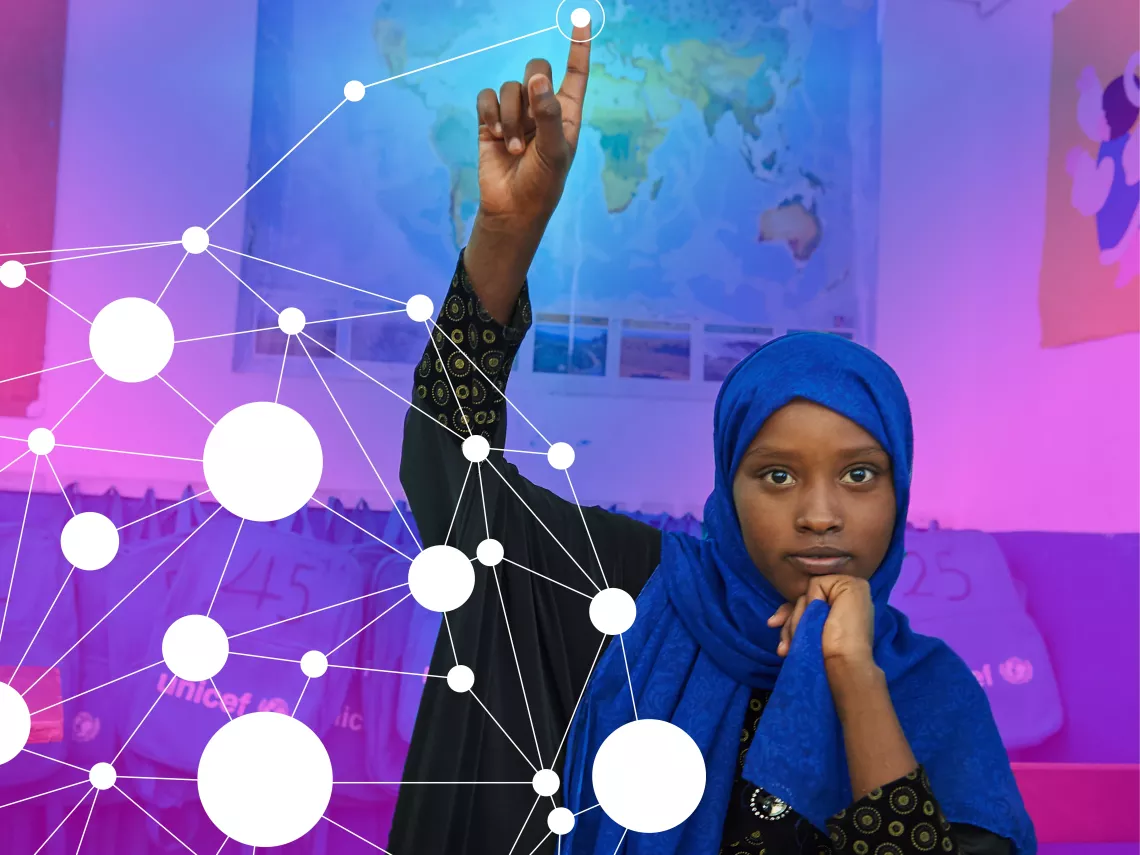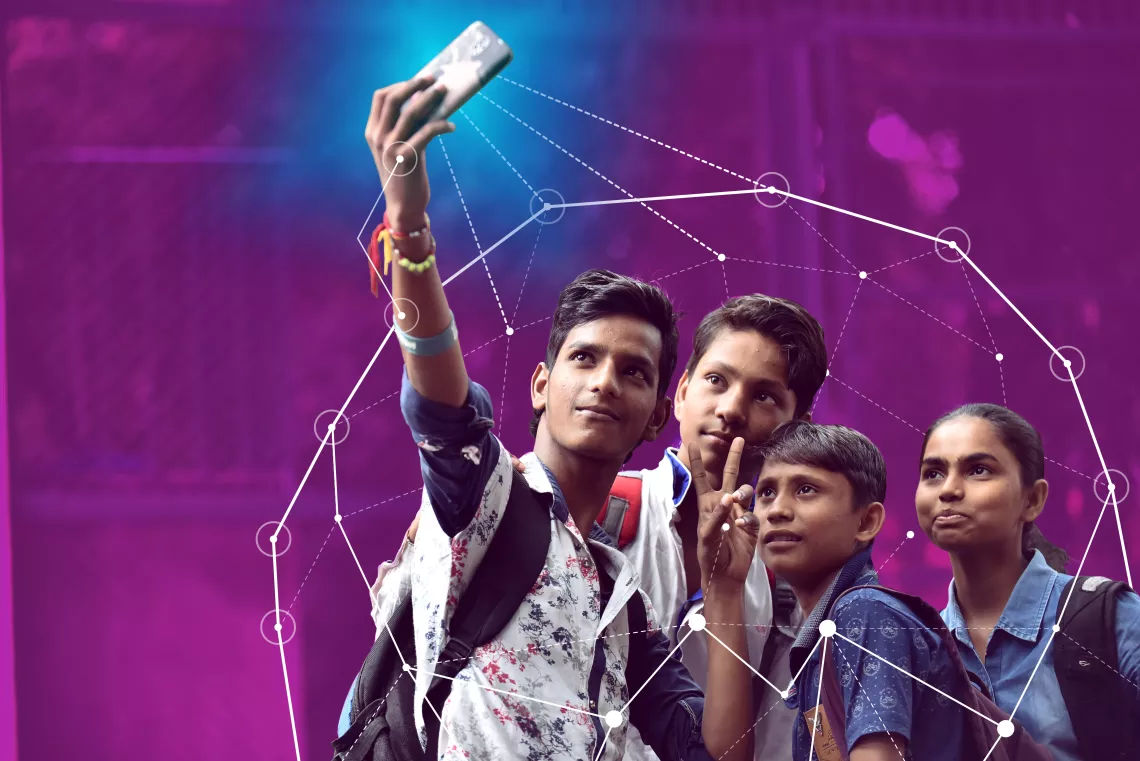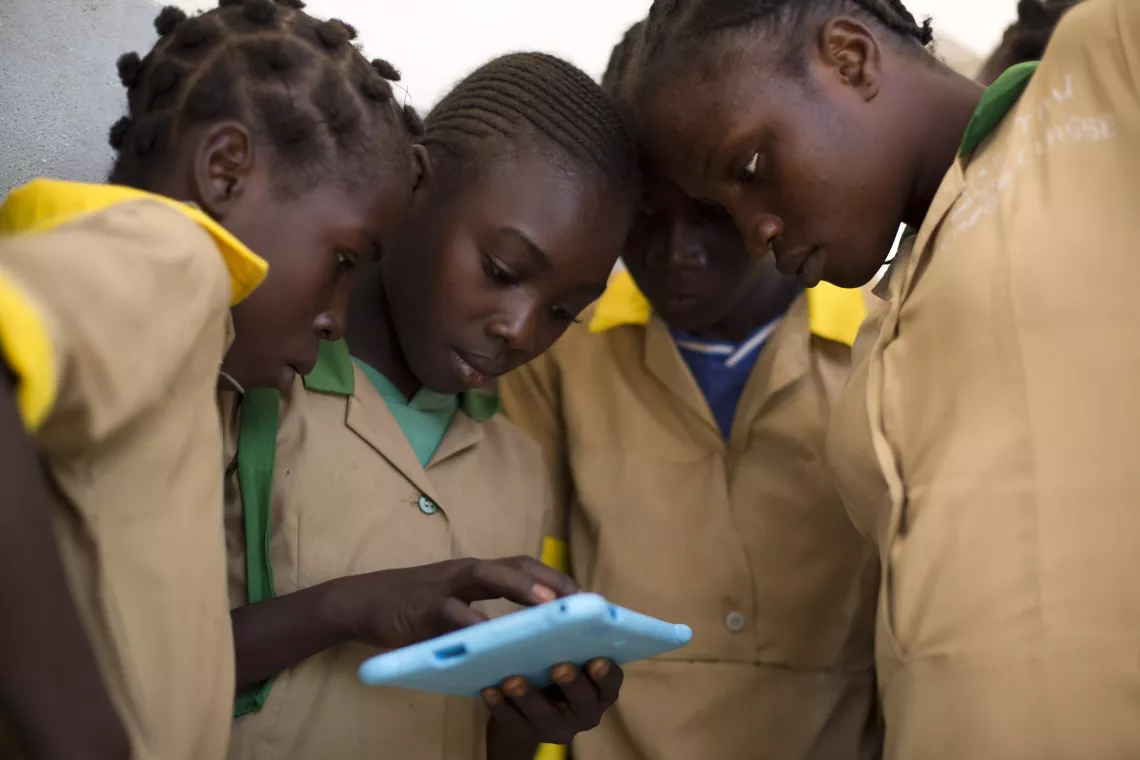Digital Connectivity
Connecting schools to the internet and empowering young people with digital skills.


1. How can we affordably connect all schools to the Internet?
The Issue
Globally, 29 per cent of young people aged 15 to 24 worldwide – around 346 million – are not online. Young people in Africa are the least connected. Around 60 per cent of population aged 15-24 in Africa are not online, compared with 4 per cent of those in Europe.
Connectivity varies widely across the globe and within the regions. In Africa, the proportion of schools connected ranges from as low as 2 percent (Ethiopia) to as high as 85 percent (Mauritius).
However, the growth of internet access around the world has slowed dramatically over the past years. Without action, the digital revolution will remain a distant dream for billions of the poorest and most isolated populations.
To be unconnected in a digital world is to be deprived of opportunities to learn, communicate and develop skills deemed critical for the twenty-first-century workplace. It will also exacerbate inequalities, reducing young people's economic opportunities and even means to access digitally-based government services.
The gender digital divide is also growing. In least developed countries, the gender gap of internet users increased from 29.9 to 32.9 between 2013 and 2017. Also, in poor urban areas, studies show men can outnumber women on the internet as much as two to one.
The Opportunity
Internet connectivity is cheaper than ever before, thanks to evolving technology and its widespread use. In 2017, the cost of mobile broadband data plans in lower-income countries decreased about 17.3% from the previous year.
There are more ways one can connect to the internet than ever before, including via mobile handset, wi-fi hotspots, or even low-orbiting satellite signals. Many technology giants are also exploring ways of bringing fast internet via the air: balloons, drones, satellites, and lasers rather than laying down cables. These trends make it possible to leapfrog much of the traditional infrastructure that was required in the past, and develop potentially highly cost- effective solutions.
Expanding digital connectivity will accelerate economic growth. According to a World Bank estimate, increasing the percentage of the total population connected to the internet from 48 to 75 per cent would add US$2 trillion dollars per year to world GDP and help create 140 million jobs.
Schools represent an ideal starting point for connecting young people. Connecting schools and utilizing them as a locus for young people’s learning and local community activities have tremendous potential for enhancing the quality of skills for young people, especially in remote areas.

2. How can we provide young people with digital skills so that they can fully and meaningfully participate in the digital economy?
The Issue
Digital literacy and skills are essential for young people to have meaningful access to the internet, allowing them to be both safe and successful online and to fully exercise their rights, including the right to privacy, freedom of expression, information and education.
However, most adults in low- and middle-income countries lack basic computer skills. By 2016, only 4% of adults in Sudan and Zimbabwe had basic digital skills. Even in the EU countries, 45% of all citizens and 37% of its workforce are deemed to have insufficient digital skills.
Many barriers exist to increasing digital literacy and skills, including: not having agile curricula that keep up with the fast-moving digital landscape, a lack of qualified trainers, and the slow response of the formal education sector.
In general, digital literacy programmes, even by corporations and NGOs, show discrepancies across their quality and effectiveness.
Digital exclusion mirrors, and risks exacerbating, long-established inequalities. Young people out of school, those living in remote areas with limited infrastructure, and women and girls are especially vulnerable since the lack of access and proficiency can reduce opportunities for pursuing technology-focused academic and career paths. In fact, the global internet user gender gap grew from 11% in 2013 to 12% in 2016, with the largest in the Least Developed Countries at 31%. Further, women are 1.6 times more likely than men to report lack of skills as a factor impeding their use of the internet.

“My mother never had a mobile phone, she didn’t know what the Internet was. I explained to her and I showed her what I was doing at school with my tablet. She was so proud of me. My dream is to become a teacher, and with what I am learning every day on my tablet, I am sure it can become a reality.”
The Opportunity
The increasing adoption of ICTs and the growing marketplace for digital goods and services are creating opportunities for young people to find employment that transcend traditional paradigms.
Digital skills will not only be a necessary part of many jobs for young people, but also for how they find and carry out work. Young people today browse web-based job listings to find work and undertake microwork for project-based crowdsourcing opportunities. Ensuring digital literacy and skills from the earliest stage can support them to make sound socioeconomic judgment when pursuing new ways of work.
Increasing young people’s digital literacy and skills will not only contribute to their success online, but also in the offline world. Lessons in classrooms are increasingly adapting blended learning, which integrates digital platforms and even computer games into formal curricula to better engage with the students and improve their critical thinking, creativity, collaboration and communication alongside problem solving.
The growth-potential of digital learning platforms is promising. An initial assessment based on Mexico City’s digital learning platforms demonstrates that, by 2022, the global emerging market revenue for digital learning could be US$ 7-15 billion, with up to 300 million users.
To catalyze the market, global tech companies, governments and foundations could use their strengths to invest in better and cheaper connectivity, build and distribute high quality content, help build the evidence for new ways of content delivery, support and collaborate with innovators by providing adequate resources and channeling promising products. We will need collaboration across multiple stakeholders to achieve these goals.
